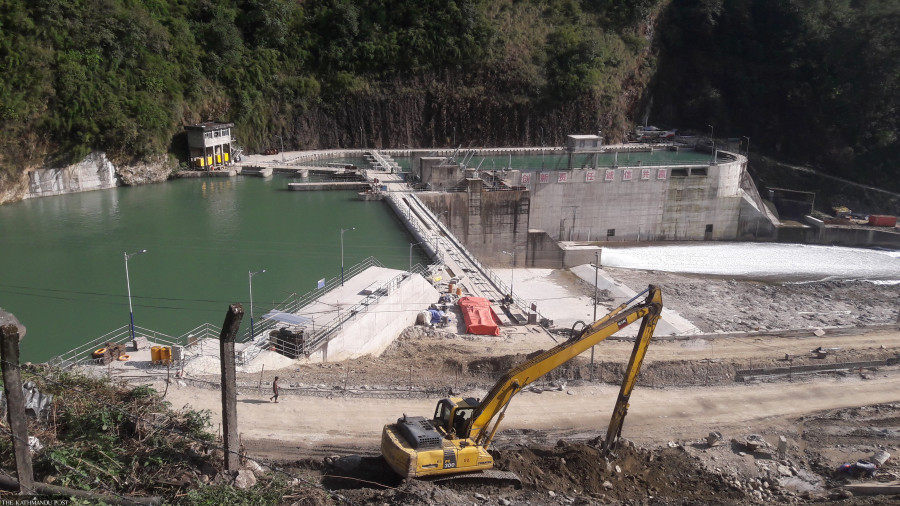
The development of large hydro-power projects has two emerging questions: “How?” and “for whom?”. The question “how” is related to the financial and skilled personnel needed to generate electricity from our immense water resources. When constructed, mega hydro-power projects require a lot of money and highly trained personnel. Nepal is a resource-poor country constrained by both capital and skilled human resources.
Moreover, whatever resources possessed have not been properly utilised, mainly due to the lack of visionary policies. Nothing more needs to be said about how promising Nepal’s hydro-power potential is, and no more awareness needs to be created. Nepal’s domestic capital is insufficient to build hydro-power projects to meet the growing demand. The proportion of hydro-power development expenditure to GDP since the beginning of its development has not exceeded 2 percent, which is significantly small as compared to the cost ($2,000-$3,000 on average, depending on the location, size, topographical structure, excess to the road and other prerequisites, etc.) of producing a kilowatt of hydro-power. Following the trend, we can derive an analogy that the longer the wait to develop hydro-power sector, the higher the cost and lower the growth rate.
Nepal has started issuing hydro-power developers licences to mobilise domestic and foreign capital. In this line of thought, licences to so-called developers are being overwhelmingly issued. Politicians, bureaucrats to technocrats have bagged such licences to generate electricity from the ever-flowing rivers. But neither has it worked in the past, nor is there a hope to realise the anticipated output in the future. Packaging rivers in the bags of politicians does not mean the development of hydro-power. It requires dynamic policies, including power purchase agreement (PPA) rate, rules of compensation to be provided to the people of project affected area, customs and duties to be imposed in bringing necessary goods in the process of producing power etc., to bring genuine power producers into the real and actionable fold.
The size of the economy of Nepal is small. According to World Bank data, the size was nearly $29 trillion in 2018, revealing the inability to invest in large hydro-power projects. What will happen if we compare the cost of other large hydro-power projects that we seek to develop in the context of the total size of our economy? As stated above, the hydro-power sector got hardly 2 percent of the total resources. From the given perspective, it is not only unmatchable but also unimaginable to develop large hydro-power projects by mobilising internal resources alone. One has to realise the environment we are tied up with to mitigate the electricity crisis. Self-evidenced facts displayed our inability to construct large hydro-power projects by mobilising internal resources. The issue of licences alone could not make any difference. It is crucial time to rethink how Nepal would be able to generate the hydro-power needed to accelerate economic growth. This calls for international capital in the form of foreign direct investment (FDI).
The question “for whom” is complementary to “how”. “For whom” to generate electricity is related to the investment proportion. In this context, the answer to this question can be delivered with the help of three investment alternatives. First, if Nepal bears all the costs coming from FDI with the provision of providing necessary facilities to generate electricity, benefits accruing from the project would be one-sided. There is no question of cost and benefit sharing. Nepal can use all the power for its domestic use. It can export if it has excess. Nepal should have to provide full security to the investment of the investors. But investors may hesitate to invest in excess of the size of the economy where occurrences of risks are obvious.
Second, Nepal can follow the “give and take” policy. Under this, the benefit and cost would be divided. The extent of the benefit accruing from the project mainly depends on the proportionality of cost. The greater the investment greater would be the benefit. Compensation for land and water use would be a major part of the investment share of Nepal. The size of compensation depends on the diplomatic dealing and bargaining power. There would be dual ownership of power generated from the joint venture. Power owned by a third party could be exported or sold in the domestic market at the current prevailing export prices, depending on the situation.
Lastly, a hydro-power project constructed by a developer under sole investment would be a one-sided benefit. Nepal can claim a portion of free equity and power as compensation for using land and water. The size of free equity and power, as described above, depends on the ability of Nepal to bargain. The developer would benefit from the rest of the power generated under this provision. Nepal will have to purchase additional power, if needed, from the developer at the current prevailing export market price.












